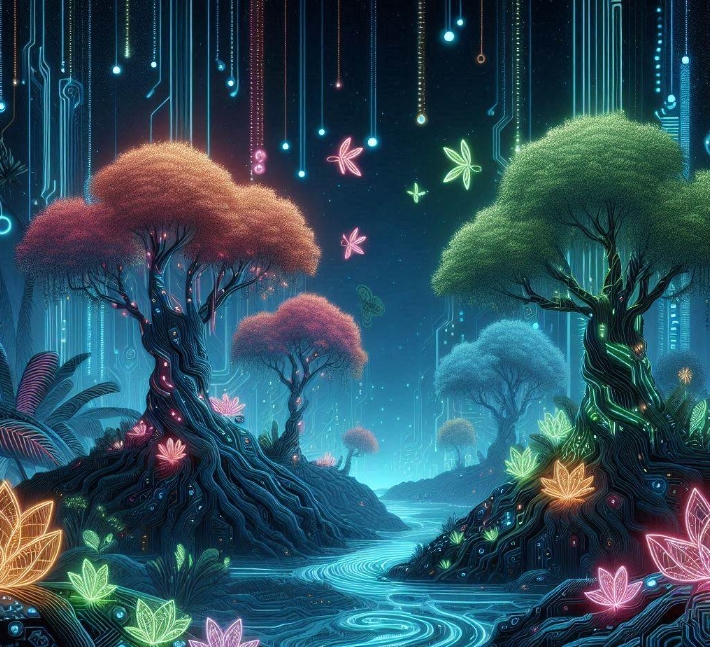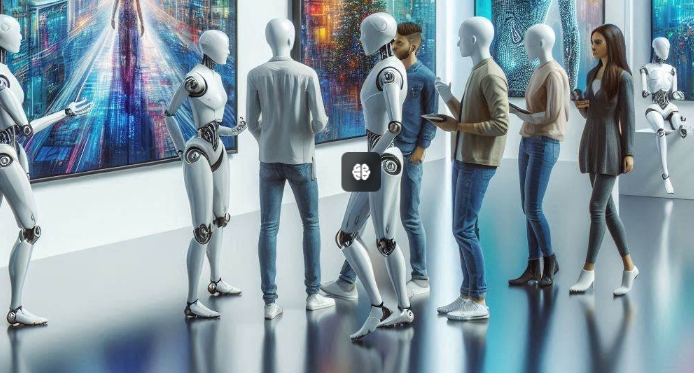
In the ongoing saga of artistic evolution, a battle brews between digital and traditional art, each vying for supremacy in the hearts, minds, and wallets of collectors and creators alike.
The Rise of Digital Art and NFTs Digital art, bolstered by technologies like Non-Fungible Tokens (NFTs) and blockchain, has surged in popularity and value:
Digital Renaissance: NFTs democratize art ownership, allowing digital creators to monetize their work and engage global audiences through decentralized platforms.
Market Disruption: Digital artworks minted as NFTs have commanded significant prices at auctions, challenging traditional notions of art valuation and ownership.
Technological Advancements: Blockchain technology ensures transparency and security in transactions, addressing concerns about authenticity and provenance in the digital realm.
The Enduring Legacy of Traditional Art Traditional art maintains its allure and cultural significance:
Craftsmanship and Heritage: Physical artworks embody craftsmanship, cultural heritage, and tactile experiences that resonate with collectors and art enthusiasts.
Historical Value: Masterpieces from renowned artists hold historical and artistic value, transcending trends and technological innovations.
Artistic Integrity: Traditional artists preserve techniques and mediums that evoke emotion, provoke thought, and inspire generations through tangible forms of expression.
Who Wins the Future of Art? The battle between digital and traditional art defies easy resolution:
Value Proposition: NFTs offer accessibility and inclusivity, empowering digital creators to monetize their art globally. However, traditional art retains its allure through craftsmanship, historical resonance, and cultural significance.
Market Dynamics: While NFTs have disrupted the art market with high-value transactions, traditional art maintains its status as a cornerstone of artistic expression and investment.
Future Trends: The future of art likely hinges on hybrid models that integrate digital technologies with traditional mediums, fostering innovation while honoring artistic traditions.
Conclusion: Embracing Diversity in Artistic Expression In the world war of art between digital and traditional mediums, there is no clear victor. Instead, the evolving art landscape celebrates diversity, innovation, and the enduring power of creativity across all forms:
Artists, collectors, and enthusiasts navigate this dynamic terrain, embracing technological advancements while cherishing the timeless beauty and cultural legacy of traditional art. Ultimately, the future of art lies in embracing diversity, innovation, and the transformative power of creativity across digital and traditional mediums alike.
american-boffin.com
bfbchamp.com
democraticcoma.com
tigrepelvar.com
charpoles.com
derbywheelblazers.com
fansfocus.net
guildnow.com
hediyeteyze.com
isprimecdn.com
kiira-korpi.net
manutd24.com
mediumtylerhenry.com
mishanghai.org
savethreestrikes.com
smilesbydavis.com
10puntos.net
band-shirt.com
icelandtrails.com
paulmarioday.com
thefunnynanny.com
Dave Tries Ballet
Buon Grande
Criacao Sites
Perry Perkins Books
Writing Essay in AU
Ka Soku
Blood is Blood Movie
Eleanor Writes Things
The Happy Prince Beirut
Town of Witless Bay
Online Igrovoi Club
Trigeminal Neuralgia - Ronald Brisman MD
Chocolate City Burlesque
Advanced Electric Scooters
W Tougei
Breadboard Maniac
Takasu App



